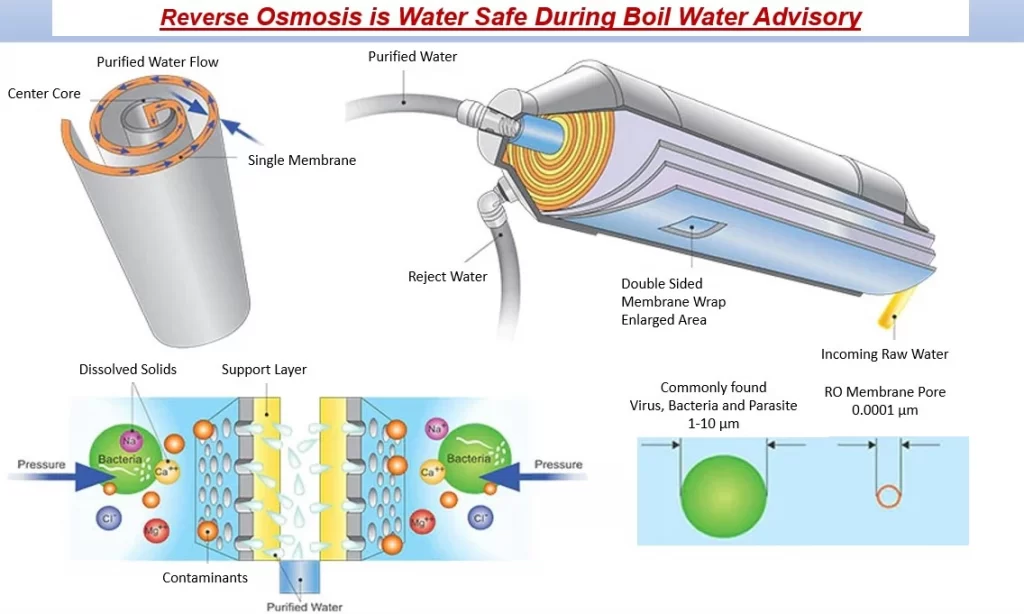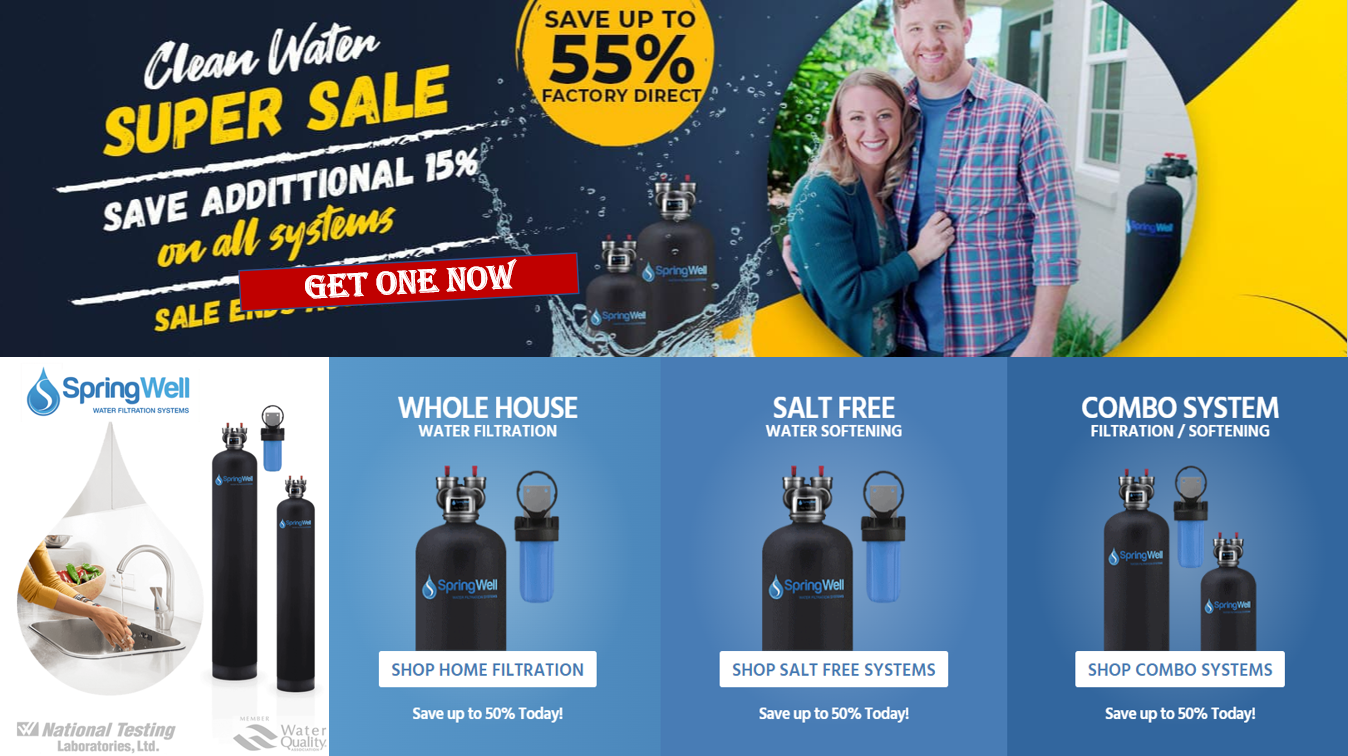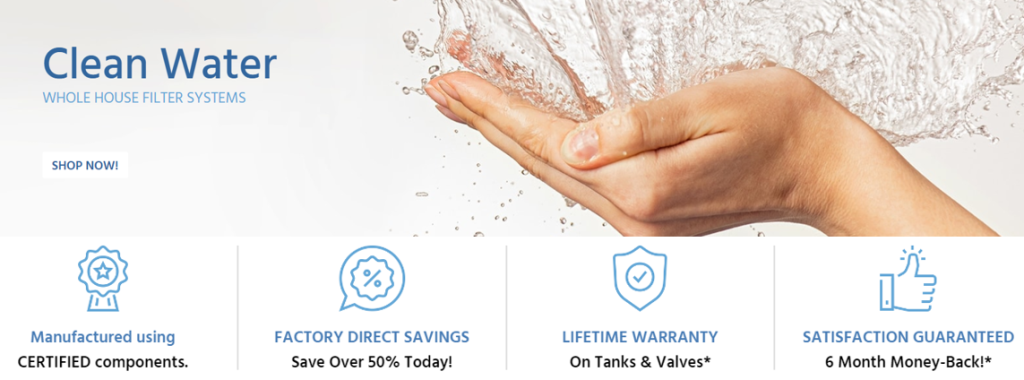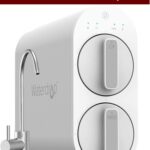Is reverse osmosis water safe during boil advisory? Yes, Purified water by a functional and NSF/ANSI 58 certified reverse osmosis water filter is considered safe during boil water advisory.

All certified reverse osmosis filters use a semipermeable membrane to purify water. It is an extremely delicate type of biological or synthetic polymeric membrane that has multiple pores. The average pore size of the membrane is only 0.0001 micron. So, it allows nothing but pure water molecules to pass through it. Along with that, a reverse osmosis water filter uses multiple other filters like PP Cotton filter, Activated Carbon filter, Sediment filter, and Remineralization filter to provide as much safe and healthy water as possible.
A RO water filter can easily remove any waterborne bacteria, parasites, and other germs that force health officials to issue boil water notices. Because their average body size ranges from 1 micron to 5 microns. In comparison to the pose size of a reverse osmosis membrane, they are 1000 to 5000 times larger.
During the filtration process, they get stuck by a membrane. That’s why filtered water by a RO water filter is safe during boil-water notice.
Best Water Filter For Boil Water Advisory
Mainly, there are 3 types of commercially available reverse osmosis water filters.
Install a Home Water Filter & Get "Unlimited Safe Drinking Water" For Decades
Get Upto 55% Discount With a Lifetime Warranty & 6-Months Money Back Guarantee Free Shipping
SpringWell Water Filtration Systems: 100% American-Made & NSF Certified Water Filters and Water Softeners
- Tankless reverse osmosis water filter
- Reverse osmosis water filter with storage tank.
- Installation-free countertop reverse osmosis water filter.
Our most preferred RO filter is the Waterdrop G2 because it can purify a whopping 600 gallons of water per day. Due to its outstanding water filtering capacity, it can be used both in homes, offices, and restaurants. One plus point is that it comes with a dedicated nickel brushed RO faucet. The Waterdrop G2 has a tankless design. So, it rarely takes any space for installation. With a 7-stage water filtration process, it offers a deal that is hard to beat.
Our Readers Get an Exclusive 10% Discount on all WaterDrop Water Filters. Click Here to Apply Coupon Code: Open-air-home-10
However, for those who can’t install a RO unit in their house, we recommend the Aquatru Countertop RO water filter. Although Aquatru filters about 100 gallons of water per day, It is a perfect choice for small families and renters.
Last but not the least
Those who want an affordable RO unit, can opt-in for iSpring RCC7AK. It offers 75 gallons of RO water per day. It comes with a special alkaline remineralization filter cartridge, a storage tank, and a faucet.
Now let’s find out whether home chores like washing dishes, laundry, taking shower, and brushing teeth are safe during boil water notice or not? If not, why?
What is a boil-water advisory?
Boil-water advisory refers to a situation when the government or health officials advise people to boil tap water before consuming it. Usually, they issue a boil-water advisory when they suspect tap water is ( or maybe) contaminated by microbiological pathogens. A boil water advisory is known as a boil-water notice, boil-water warning, boil-water order, or boil order, etc.
During a boil water notice, The Centers for Disease Control and Prevention (CDC) boils water for at least 1 minute to kill protozoa, bacteria, and viruses. If you are above 6,600 ft or 2000 meters, boil water for at least 3 minutes to kill germs. Because at higher altitudes, water boils at lower temperatures. So, it takes more time than usual to kill all the microbiological pathogens that might be present in the water.
Can you wash dishes during a boil order?
Can you wash dishes during a boil order?
Washing dishes with tap water is not safe during a boil order. The CDC recommends using disposable paper plates and cups during boil order notice.
However, if you use boiled water, bottled water, or RO water to wash dishes, then it’s fine.
You can also use liquid chlorine to disinfect tap water and then use that water to wash your dishes.
Put 8 drops or ⅛ of a tablespoon of Pure Bright liquid bleach in 1 gallon of water. Mix it well and wait 30 minutes. After that, you can use the solution to clean your dishes.
In case you have a Sani-Rinse/ Heated-Rinse enabled dishwasher, you won’t need to worry about the safety of your dishes anymore. Not even during boil water notice or when there is a flu or other infectious disease in the house.
You can use normal tap water in a Sani-Rise/ Heated-Rinse enabled dishwasher just like you normally would. The dishwasher will heat up the water up to 192° F before giving your dishes a final rinse. At that temperature, all the viruses and bacteria die. Thus, it provides 100% clean dishes and prevents germs transmission to another live host.
Can you shower during a boil water notice?
As long as you don’t swallow any water, showering during boil water notices is okay. But be careful, when showering infants and young children. Give them a sponge bath instead of showering to reduce the chance of them swallowing germ-contaminated water.
Can you wash your hands during a boil water advisory?
Yes, you can wash your hands during the boil water advisory. Make sure you scrub your hands with soap for at least 30 seconds before rinsing them under running tap water.
If you don’t have tap water or want to be extra careful, use an alcohol-based hand sanitizer that has at least 60% alcohol. We prefer the FDA-approved aloe vera scented ‘Aloe Hand Sanitizer’. It uses 62% Ethyl Alcohol to 99.9% germs. It comes in 12 Fluid Ounce Pack, making it easy to carry in offices, schools, and homes.
Can I wash my hair during a boil water advisory?
Just like showering, washing hair is also safe during boil water advisory.
Can you do laundry during a boil water advisory?
Yes, you can do your laundry using tap water in a boil water advisory.
Can you brush your teeth during a boil water advisory?
For brushing your teeth during a boil water advisory you should always use boiled water, bottled water, or RO water.
What happens if you drink water under a boil advisory?
If you drink contaminated tap water during a water boil advisory, you increase the potential of getting sick. Depending on the pathogens present in tap water, you can get diarrhea, cholera, giardiasis, salmonella infection, E. coli infection, etc.
During a Boil water notice, always use boiled water for
- Drinking
- Making ice
- Brushing your teeth
- Preparing baby formula
- Preparing food
- Preparing drinks (even when the drink has its own filter, like coffee made with a coffee maker)
- Giving pets water to drink
What to do after a boil water advisory is lifted?
The CDC recommends flushing, cleaning, and sanitizing all home appliances that come in contact with water right after the boil water order is lifted. That includes:
Household Faucets and Pipes: Run water through each of the faucets for at least 5 minutes after the boil water order is lifted. Running water helps flush the faucets and remove any kinds of pathogens that may have taken shelter inside.
Ice Makers: dispose of all the existing ice cubes. Flush the water line by making at least three batches of ice and dumping them as well. Take out the ice bin and disinfectant with liquid chlorine. Rinse it well with clear water before putting it in.
Reverse osmosis water filtration system: Replace the filter cartridges used inside the filter. If your RO water filter has a water storage tank, then you will need to sanitize it as well. Disconnect the tank, dump all the water, disinfectant it with a bleach-water solution, and then rinse it well with clear water.
Hot Water Heater: For a tankless water heater, flush the entire system by running hot water for at least 5 minutes.
For a tank-type hot water heater, dump all the existing water in the tank. Disinfect it with liquid choline and rinse it with clear water.
Inline Water Filter: change the filter cartridges after lifting the boil water notice.






[…] Is reverse osmosis water safe during boil advisory? […]